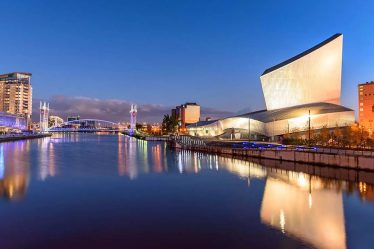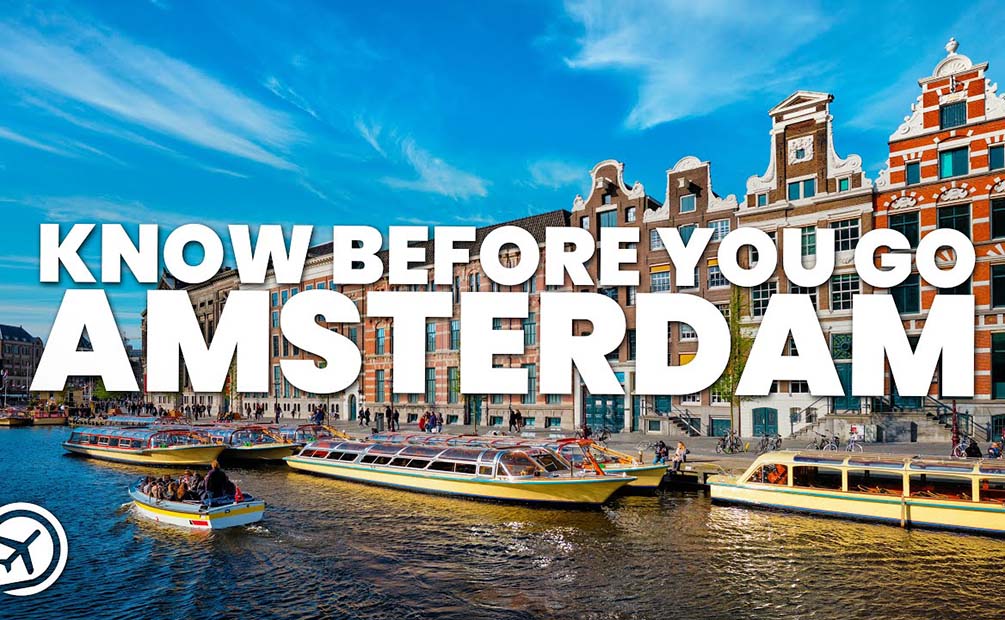
Amsterdam, the capital of the Netherlands, is an enchanting city known for its picturesque canals, historic architecture, and vibrant cultural scene. From navigating the city’s efficient transport system to understanding local customs, here’s a comprehensive guide to help you make the most of your trip to this beautiful city.
1. Getting Around: Transportation Tips
Amsterdam’s transportation system is well-developed, making it easy for visitors to explore the city. Here’s a detailed look at the various modes of transport you’ll encounter.
Public Transportation
Trains
Amsterdam’s primary railway hub is Amsterdam Centraal Station, a grand building located in the heart of the city. Trains from Centraal connect Amsterdam to other major Dutch cities like Rotterdam, Utrecht, and The Hague, as well as international destinations such as Brussels and Paris. You can buy tickets at the NS (Dutch Railways) ticket counters or self-service machines located in the station. The NS app is a handy tool for checking schedules and purchasing tickets on your smartphone.
Trams and Buses
Amsterdam is served by an extensive network of trams and buses operated by GVB. The city is divided into different tram lines that cover key areas and attractions. The GVB offers various ticket options, including single tickets, day passes, and multi-day passes. Tickets can be purchased at GVB offices, vending machines, or on the GVB website. The OV-chipkaart is a contactless smart card that can be loaded with credit and used on all public transportation, providing a convenient way to travel around the city.
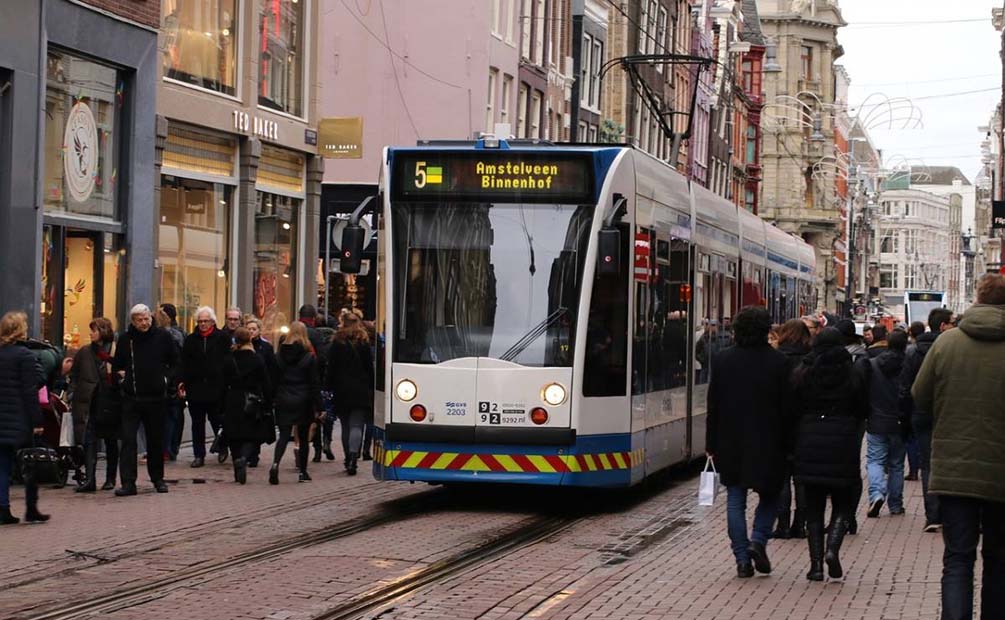
Ferries
For a unique experience, take advantage of the free ferries that cross the IJ River, linking the city center to Amsterdam North. These ferries run regularly throughout the day and are a great way to enjoy scenic views of the city from the water. The ferries are operated by GVB and do not require a ticket.
Biking
Renting a Bike
Cycling is an integral part of Amsterdam’s culture. The city’s flat terrain and extensive network of bike lanes make it ideal for cycling. Numerous bike rental companies operate throughout the city. Popular options include MacBike, Rent a Bike, and Yellow Bike. Rentals typically cost around €10-€15 per day, depending on the type of bike and rental duration.
Cycling Tips
When cycling in Amsterdam, always use the designated bike lanes and follow traffic signals. Cyclists have priority at many intersections, but be aware of other road users, including trams, pedestrians, and other cyclists. It’s also essential to lock your bike securely when leaving it unattended to prevent theft.
Walking
Exploring on Foot
Many of Amsterdam’s attractions are within walking distance of each other, especially in the city center. Walking allows you to fully appreciate the city’s charming streets, canals, and historic buildings. The Jordaan and De Pijp neighborhoods are particularly pleasant to explore on foot, offering a mix of boutique shops, cafes, and cultural landmarks.
Taxis and Ride-Sharing
Taxis
Taxis are readily available in Amsterdam, and you can hail one from the street or book one via phone or apps. While convenient, taxis are generally more expensive than public transportation. A ride from the city center to the airport can cost around €40-€50.
Ride-Sharing
Services like Uber and Bolt operate in Amsterdam. Ride-sharing apps offer a convenient and often more affordable alternative to traditional taxis. Simply use the app to request a ride and track your driver’s arrival.
2. Accommodation: Where to Stay
Amsterdam offers a wide range of accommodation options to suit different budgets and preferences. Here’s how to find the right place to stay:
Booking Accommodation
Use popular booking platforms like Booking.com, Expedia, and Airbnb to compare prices, read reviews, and find deals. It’s also worth checking out travel forums and blogs for recommendations from other travelers.
When choosing where to stay, consider the location in relation to the attractions you want to visit. Central areas like the Jordaan, De Pijp, and the Canal Belt offer easy access to major sights, dining, and shopping. For a quieter experience, neighborhoods like Oud-West and Amsterdam East are excellent options, offering a more local feel.

Types of Accommodation
Hotels
Amsterdam boasts a variety of hotels ranging from luxury to budget-friendly options. For a luxurious stay, consider the Hotel Pulitzer or The Dylan, both known for their exceptional service and prime locations. Mid-range options include the Moxy Amsterdam Houthavens and the Hotel V Fizeaustraat, which offer comfort and style at reasonable prices.
Hostels
If you’re traveling on a budget, Amsterdam has several well-rated hostels. Stayokay, with locations across the city, offers affordable dormitory-style accommodation and a social atmosphere. ClinkNOORD, located in Amsterdam North, provides a vibrant setting with modern amenities.
Short-Term Rentals
Airbnb offers a variety of short-term rental options, including charming apartments, unique houseboats, and cozy studios. Rentals can provide a more home-like experience and often include amenities like kitchen facilities, which can be particularly useful for longer stays.
3. Dining and Cuisine: What to Eat
Amsterdam’s food scene is diverse and exciting, offering everything from traditional Dutch dishes to international cuisine. Here’s a guide to some must-try foods and dining experiences.
Traditional Dutch Food
Stroopwafels
Stroopwafels are a beloved Dutch treat consisting of two thin waffle cookies filled with a gooey caramel syrup. They are often enjoyed fresh from street vendors or markets. Visit the Original Stroopwafels stand at the Albert Cuyp Market to try these delicious treats.
Haring
Haring, or raw herring fish, is a traditional Dutch delicacy. It’s usually served with onions and pickles and eaten by holding it by the tail and taking a bite. Head to a local fish stand, such as the one at the Spui Square, to experience this unique dish.
Poff Poff
Poff Poff, also known as Dutch mini-doughnuts, are popular at markets and food stalls. These doughnuts are crispy on the outside and soft on the inside, often sprinkled with powdered sugar. You can find them at various street food markets around the city.
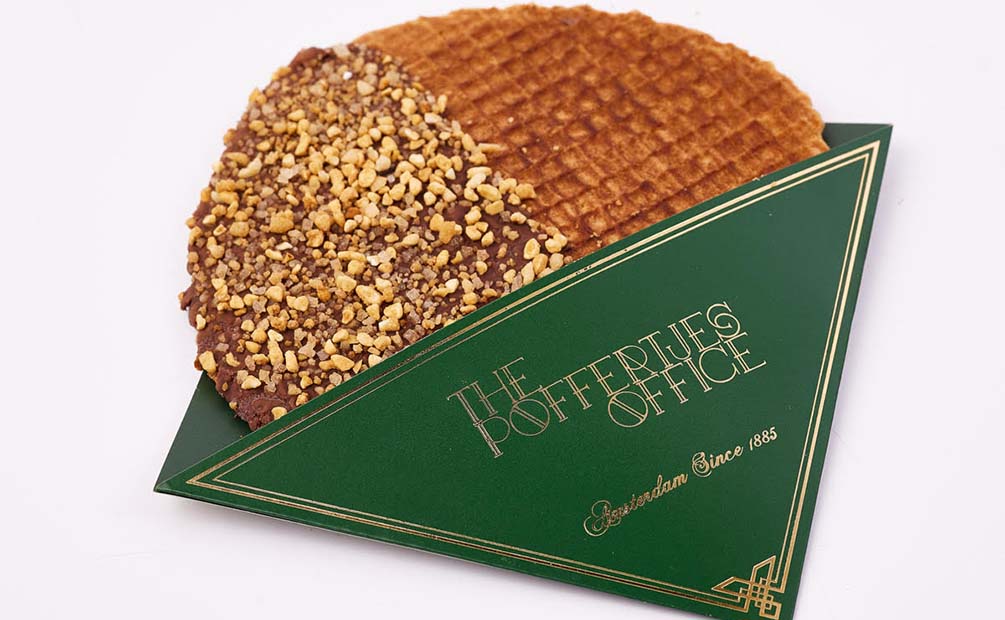
International Cuisine
Indonesian Food
Amsterdam’s historical ties with Indonesia are reflected in its food scene. Rijsttafel, or rice table, is a popular dish consisting of a variety of small Indonesian dishes served with rice. Visit restaurants like Restaurant Blauw or Tempo Doeloe to enjoy a traditional rijsttafel experience.
Asian Cuisine
The city’s Chinatown, located around the Zeedijk street, offers a range of excellent Chinese restaurants. For Japanese food, try the Michelin-starred restaurant Yamazato or the casual yet highly-rated restaurant Sushi Samba. Thai food enthusiasts should check out the vibrant Thai restaurant De Khao Man Gai.
Dining Out
Reservations
Many of Amsterdam’s popular restaurants require reservations, especially during peak dining times. It’s a good idea to book ahead to avoid long waits or missing out on a table altogether. Websites like TheFork and OpenTable make it easy to reserve a spot at your desired restaurant.
Food Markets
Amsterdam is home to several bustling food markets where you can sample a variety of street foods and local delicacies. The Albert Cuyp Market in De Pijp is a must-visit for its wide range of food stalls, while Foodhallen in Amsterdam West offers a trendy indoor market experience with diverse food options.
4. Cultural Etiquette: Do’s and Don’ts
Understanding and respecting local customs can enhance your experience in Amsterdam. Here’s what you need to know:
Respecting Local Customs
Biking
Cycling is a significant part of Amsterdam’s culture. Always use bike lanes and follow traffic signals. When cycling, signal your turns and be aware of your surroundings. Remember that cyclists often have the right of way at intersections.
Tipping
Tipping in Amsterdam is not mandatory, but rounding up the bill or adding a small tip is appreciated in restaurants, cafes, and bars. A tip of around 5-10% is typical for good service.
Language
English
Most Amsterdam residents speak English fluently, making it easy for travelers to communicate. However, learning a few basic Dutch phrases can be appreciated and is a sign of respect for the local culture.
Basic Dutch Phrases
- Hello: Hallo
- Thank you: Dank u / Dank je
- Please: Alsjeblieft
- Excuse me: Pardon / Excuseer
Smoking and Drinking
Cannabis
In Amsterdam, cannabis is decriminalized, and you can purchase and consume it in licensed coffee shops. However, it is not legal to smoke cannabis in public spaces, and using it in non-designated areas can result in fines.
Public Drinking
Drinking alcohol in public areas such as streets and parks is generally prohibited. Make sure to consume alcohol only in designated areas like cafes, bars, and restaurants.
5. Safety and Health: Staying Safe
Amsterdam is a safe city, but it’s always wise to be prepared. Here are some tips for staying safe and healthy during your visit:
Personal Safety
Scams
While Amsterdam is relatively safe, be aware of common scams and pickpockets, especially in crowded tourist areas. Keep your belongings secure and be cautious when approached by strangers asking for money.
Emergency Services
In case of an emergency, dial 112
for police, fire, or medical assistance. Emergency services in Amsterdam are efficient and responsive.
Health
Travel Insurance
Travel insurance is essential to cover potential issues such as health emergencies, accidents, or theft. Ensure your policy includes coverage for medical expenses and trip cancellations.
Medical Care
Pharmacies (apotheken) are widely available throughout Amsterdam for minor health issues. For more serious medical concerns, hospitals such as Amsterdam UMC and OLVG offer comprehensive care.
6. Money Matters: Currency and Payments
Managing your finances during your trip will help you avoid unnecessary stress:
Currency
Euro (€)
The Euro is the currency used in Amsterdam. ATMs are plentiful, and you can withdraw cash with a credit or debit card. Major credit cards are widely accepted, but it’s a good idea to carry some cash for smaller purchases or markets.
Credit Cards
Credit cards are commonly used in Amsterdam, but it’s advisable to have a small amount of cash for transactions at places that may not accept cards, such as small cafes or markets.
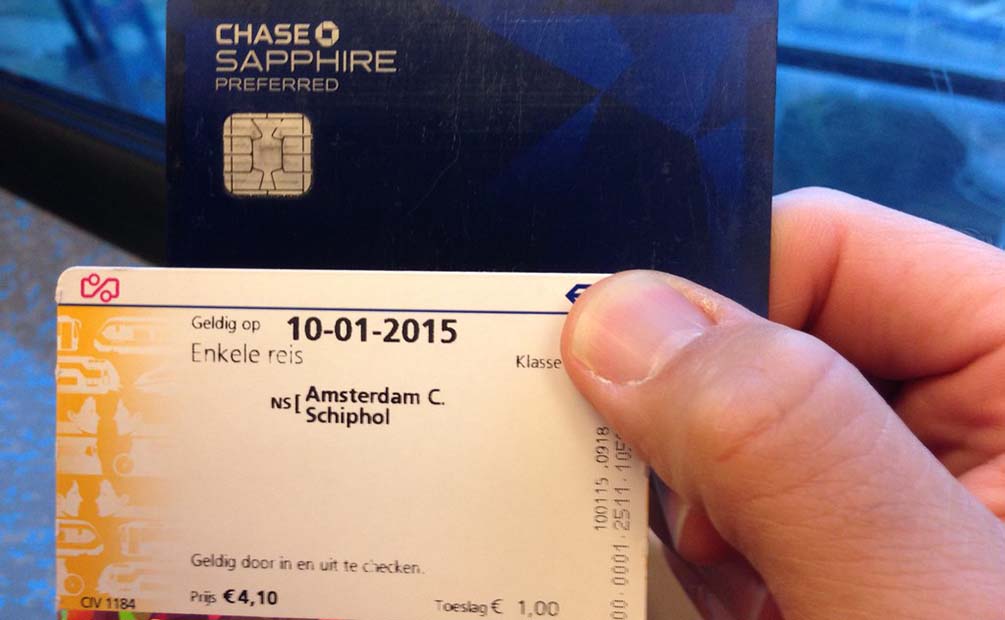
Budgeting
Costs
Amsterdam can be an expensive city, so plan your budget accordingly. Accommodation, dining, and attractions can add up, especially in peak tourist seasons. To manage your budget, consider purchasing an I Amsterdam City Card, which offers discounts on attractions, free public transportation, and access to certain museums.
Discount Cards
The I Amsterdam City Card can be purchased for 24, 48, or 72 hours and includes access to popular attractions like the Rijksmuseum, the Van Gogh Museum, and a canal cruise. It also provides free use of public transportation, which can help save money on travel around the city.
7. Must-See Attractions: What to Visit
Amsterdam is packed with incredible attractions. Here’s a guide to some essential spots you won’t want to miss:
Museums
Rijksmuseum
The Rijksmuseum, located on Museumplein, is one of the most famous museums in the Netherlands. It houses an extensive collection of Dutch art and history, including masterpieces by Rembrandt, Vermeer, and other Dutch Golden Age artists. The museum’s stunning building and beautiful gardens add to the experience.
Van Gogh Museum
The Van Gogh Museum, also on Museumplein, is dedicated to the works of Vincent Van Gogh. It features the largest collection of Van Gogh’s paintings and drawings in the world. The museum also offers insights into his life and artistic development.
Historical Sites
Anne Frank House
The Anne Frank House is a moving museum located in the building where Anne Frank and her family hid during World War II. The museum offers a poignant glimpse into Anne’s life and the history of the Holocaust. Tickets should be booked in advance, as the museum is extremely popular.
Royal Palace
The Royal Palace, situated in Dam Square, is a grand 17th-century building that was originally constructed as a city hall. It is now used for royal events and functions. Visitors can explore the opulent rooms and learn about the palace’s history.
Parks and Canals
Vondelpark
Vondelpark is Amsterdam’s largest and most popular park, offering a green oasis in the heart of the city. It’s perfect for a leisurely stroll, a picnic, or simply relaxing by the pond. The park also hosts outdoor concerts and events during the summer months.
Canal Cruise
A canal cruise is a quintessential Amsterdam experience. The city’s historic canals provide a unique perspective on its architecture and landmarks. Several companies offer boat tours, ranging from classic sightseeing cruises to dinner cruises with live music.
Amsterdam is a city full of history, culture, and charm. With its efficient transportation system, diverse dining options, and a wealth of attractions, it’s a destination that offers something for every traveler. By planning ahead and understanding local customs, you can ensure a memorable and enjoyable visit. Whether you’re exploring the city by bike, savoring Dutch delicacies, or immersing yourself in its rich history, Amsterdam is sure to captivate you.
